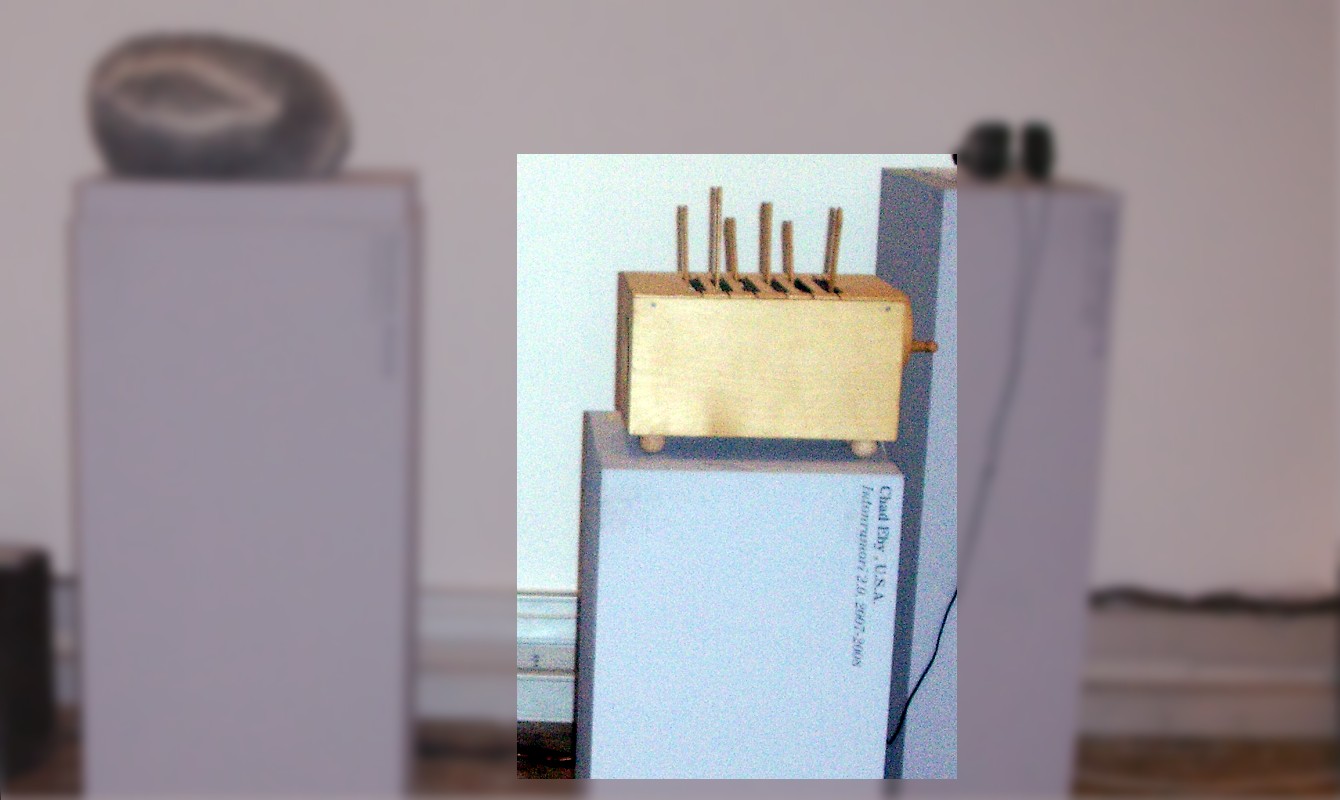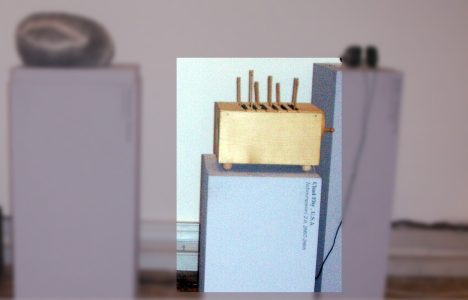Artist
Chad M. Eby
https://chadeby.org/work
Chad Eby is a sound and installation artist working at the crash site between art and technology. He currently teaches art and design courses at Florida State University.
Work title
Intonarumori 2.0
object, 2007/2008
click the thumbnails to enlarge the images
technical specifications
In the ideal case the piece will be driven by an Arduino microcontroller board coupled with a Soundgin IC development board housed in an MDF case. An integrated amplifier and speaker will
produce monophonic sound. If the above scenario doesn’t provide a satisfactory experience, the Arduino will be replaced by a MAKE controller and a small laptop computer running a Max/MSP runtime patch will have to be included; this complicates the object, so I will
strive to use standalone microcontrollers. Turning the crank in either direction triggers sounds via infra-red interruption sensors–variable resistors (bend sensors or pots) attached to each
lever will select a particular pallette of noises for output to the amp and speaker. See the attached diagrams for components.
Short description
“let us cross a great modern capital with our ears more alert than our eyes and we will get enjoyment from distinguishing the eddying of water, air and gas in metal pipes, the grumbling noises that breathe and pulse with indisputable animility, the palpitation of waves, the
coming and going of pistons, the howl of mechanical saws, the jolting of the tram on its rails, the cracking of whips, the flapping of curtains and flags.
We enjoy creating mental orchestrations of crashing down of metal shop blinds, slamming doors, the hubbub and shuffle of crowds, the variety of din from the stations, railways, iron foundries, spinning mills, printing works, electric power stations and underground railways”
This sound object is a digital reinterpretation of the fututrist Luigi Russolo’s Intonorumori noise instruments. As in the original, a hand-crank is turned on the back of the boxy device to produce noises from the front. In this updated version, six levers are added corresponding to:
(one)
Rumbles
Roars
Explosions
Crashes
Splashes
Booms
(two)
Whistles
Hisses
Snorts
(three)
Whispers
Murmurs
Mumbles
Grumbles
Gurgles
(four)
Screeches
Creaks
Rumbles
Buzzes
Crackles
Scrapes
(five)
Noises obtained by percussion on metal, wood, skin, stone, tarracotta, etc.
(six)
Voices of animals and men:
Shouts
Screams
Groans
Shrieks
Howls
Laughs
Weezes
Sobs
(The observant will notice only five levers in the images; the actual
object will have six)
By turning the crank and manipulating the levers, an orchestra of
noise may be produced out the front speaker.




